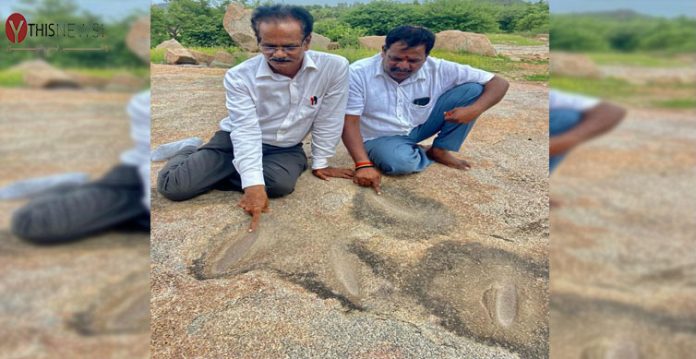During the archaeological explorations conducted by archaeologist E Sivanagi Reddy at Basvaipalli village in Devakonda mandal of Mahbubnagar district, grooves from the Neolithic period were discovered.
During his explorations at Basvaipally village in Devarkadra mandal, archaeologist E Sivanagi Reddy discovered four Neolithic grooves on a hillock where an 18th Century AD temple of Lord Venugopala is located.
ALSO READ: Telangana to Have 13 New Mandals
Grooves were created by sharpening stone axes made of Basalt stone by humans, according to him. There were grooves that measured four to eight inches long, three to four inches wide, and two inches deep. Their location was close to the temple’s mandapam
They were discovered during the Yadadri Temple Development Authority’s identification of granite quarries to extract new stones required for the restoration of medieval temples at Kolanupaka. According to Sivanagi Reddy, Basvaipalli may have served as a hunting and farming area for the Neolithic man.
It was speculated that the serpent hood-shaped granite rocks and natural caves found in the hills at Manyamkonda, Choudarapalli, Tatikonda, Rachala, Asnapur, and Moosapet that produced Neolithic pieces of evidence, including prehistoric rock paintings might have been temporary shelters before they moved to other areas.
ALSO READ: Leopard sightings create panic in 3 villagers in Andhra, Telangana
Sivanagi Reddy dates the Neolithic grooves found on the Basvaipalli hillock between 4000 and 2000 BC based on evidence from the grooves.
In his appeal to the local communities, Reddy urged them to preserve these grooves, which hold a lot of archaeological significance. An architect from Heritage Matters, Sarath Chandra, participated in the exploration along with an architect from the same village, Vadde Mogilayya.
Mahbubnagar district’s archaeological importance is well known due to its continuous history that archaeologists have documented from the Mesolithic to the Megalithic and Neolithic periods. Numerous explorations have been carried out in Devarkadra, Moosapet, and Addakal mandals to uncover how prehistoric human habitations flourished on hillocks in these areas.
(This story has been sourced from a third-party syndicated feed, agencies. Raavi Media accepts no responsibility or liability for the text’s dependability, trustworthiness, reliability, and data. Raavi Media management/ythisnews.com reserves the sole right to alter, delete or remove (without notice) the content at its absolute discretion for any reason whatsoever.)


